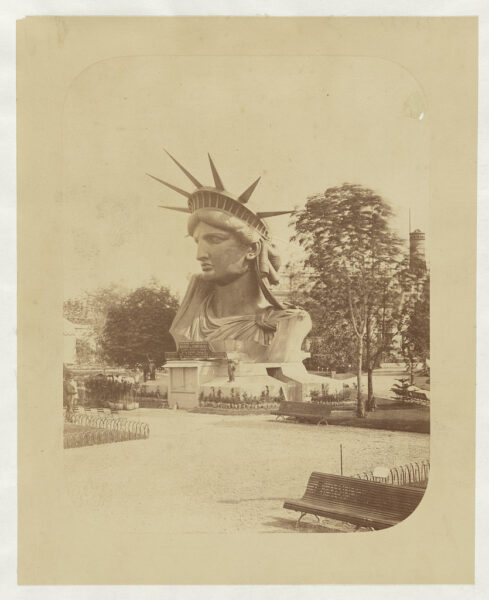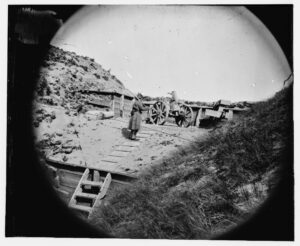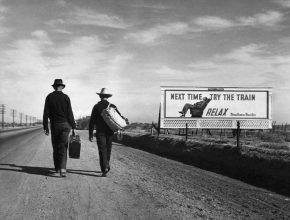Southern Legitimacy Statement: Carpetbagger by birth, South Carolinian by the grace of marriage. White-collar professional with lofty career aspirations of the traveling carnival circuit, ideally a leadership role with the midway sales division. Southern is as Southern does.
The Wal-Mart Diaries
by M. Guy LaGrenouille
as translated by James Vachowski
[EDITOR’S NOTE: In 2016, the noted French essayist Guy LaGrenouille embarked on a leisurely tour of the American South. LaGrenouille’s impressions first appeared as serial travelogues within the pages of Paris Match, where his unique and controversial perspective drew an immediate backlash from the city’s cultural elite. In the most notable incident, the membership of Les Clubs des Chefs des Chefs led a three-week-long general strike in response to LaGrenoiulle’s bold assertion that “Waffle House is proof God loves us, and that He wants us to be happy.”
LaGrenouille’s collected writings are due for publication later this year under the title of “Les Journaux Wal-Mart” (“The Wal-Mart Diaries”). It is this magazine’s distinct privilege to present a brief excerpt from LaGrenouille’s seminal journey of cross-cultural exploration, made available in English for the first time through the superb translation of James Vachowski.]
Chapter 4: Market Day, In The Land of Plenty
When one arrives in Les États-Unis from the Continent, but particularly from those urban hubs where neighbors live atop one another, bodies herded as cattle into micro-efficiency apartments while our collective standard of living erodes more with each passing day, one is struck by the obvious wealth in evidence here, at the sheer opulence out on display in the luxurious, split-level homes which comprise American suburbs. Each home a mansion with two, perhaps even three cars gracing the curb! These vehicles are not the minuscule Renaults and Peugeots which litter the banlieues of Paris, no; they are huge, hulking beasts of steel and rubber. No American with a soul would deign to sit behind the wheel of a compact car. Their machines seem engineered for the sole purpose of burning petrol, actual transportation but a secondary concern. And while each of these homes is equipped with a massive, nay, a cavernous garage, spacious enough to rival the grottoes at Lascaux, it seems somehow forbidden to actually park a vehicle inside of them. Such an arrangement would reek of modesty or even worse, of compartmentalization. Faced with such wide open spaces, one feels the irresistible compulsion to sprawl.
The wealth of this great nation is such that it spills out from homes unbridled, resulting in great pools of detritus which pool up over front lawns and in driveways. The true heartbeat of America, that pounding, pulsating rhythm called capitalism, is laid bare like clockwork each Saturday morning when friends and neighbors observe a quaint tradition known as the “garage sale.” Southerners flock to these pop-up bazaars in earnest, free to display their repressed haggling abilities there on the smooth-poured concrete sidewalks. The placid streets, the tree-lined lanes and idyllic culs-de-sac clog with minivans and full-size pickups, sport utility vehicles so pristine one doubts whether the owner has ever even contemplated diverting from the pavement. Harried housewives mix with silver-haired retirees and itinerant Mexicans, the lot driving with such intensity as seen in a Formula One championship. The local constabulary wisely suspend all traffic enforcement between eight o’clock and noon while children take refuge before a block of animated programming, generously sponsored for gratis through benevolent corporate endowments.
The pinnacle of peak excess, however, the crown jewel in America’s cornucopia of commerce, is a storied retail institution with the deceptively bland moniker of “Wal-Mart.” Each Southern city must have a Wal-Mart, by statute it seems, and denizens of those whistle-stop towns and villages incapable of supporting such a footprint are obligated to hang their heads in a state of perpetual shame. To refer to one’s local Wal-Mart as a mere “store” would be to do a grave disservice, both to the chain and to one’s self, for this blessed place is so much more than just a simple shop. A Wal-Mart is a colossus. An institution. A destination. While their new buildings might initially touch down on the outskirts of town, even the most humble, modest of Wal-Marts will quickly and irrevocably transform the surrounding landscape through the sheer force of its gravitational pull. The finest restaurants inevitably spring up not long thereafter, their storied names in neon lights drawing a steady stream of discriminating diners from miles around. Hardee’s. Cracker Barrel. Kentucky Fried. These elite restauranteurs form a veritable chain of sustenance, a “Who’s Who” of quick-service fare to eclipse anything Zagat or Michelin might have on offer. The end result is a landscape forever altered, drive-through lanes aligned end upon end as far as the eye can see, a moveable feast of all things salty and deep-fried.
Entering a Wal-Mart is an experience in and of itself— one is not merely greeted upon crossing the threshold but hailed by a distinguished elder of the community. An endless row of trolleys stands nearby, hundreds of handtrucks at the ready, each boasting more capacity than a standard European parking space, but even these great conveyances seem dwarfed by the magnitude of the aisles. Those aisles! Seemingly endless in length and width, stretching far as the eye can see, stacked floor to ceiling with not a millimeter left bare. And the merchandise! Such wares as are on display, brought forth from the furthest reaches of the Orient. Yea, the most talented scribe, the most gifted poet could slave before a thesaurus his entire career, yet still fall short of describing the limitless variety out on display. But be forewarned, ye virgin Wal-Mart shoppers: the new visitor’s wonder fast yields to despair, as one hardly knows just where to begin! The boutiques of the Champs-Elysées might prove a simpler challenge, as even that majestic and storied avenue runs but in a single direction. Faced with the rush of such freedom, such choice, most men upon entering a Wal-Mart for the first time immediately succumb to the dark emotion of fear as the possibilities, so presented, are quite literally endless.
Art thou seeking groceries to fill the family deep freeze, perhaps in anticipation of cold winter months ahead? Stride with purpose towards the rear of the store, and simply work forward from there. In search of new fashions? The latest style du monde, perhaps? Turn right at the snack cakes and savor a broad array of the finest raiments, meticulously sorted by gender and size. Housewares, electronics, artist and craftsman supplies? A world of opportunity waits on these shelves, and all at markdown price. No less than a dozen aisles serve as tribute to the great outdoors: rods and reels, vinyl tents and camp stoves, guns and ammunition aplenty, enough edged weapons to outfit a Shaolin temple. This hallowed section merits specific mention, a testament to the Americans’ undying and sacred commitment to arm one’s self to the teeth. The great explorer himself, Ernest Shackleton, would have done well to have popped into a Wal-Mart before his Antarctic sojourns.
And if this study might have somehow created the impression that an outing here is a solitary, reflective chore, then I have been sorely remiss. A visit to Wal-Mart is an opportunity to rub shoulders with all walks of life, since the store quite naturally serves as the social hub of any strong and vibrant Southern community. All colors and creeds pass through these automatic doors, all races and religions shopping together as equals beneath the florescent lights. Should nothing else be said about them, know that the people of Wal-Mart are a diverse lot, drawn from the salt of the Earth it seems. Market day here is a family affair, parents guiding children through an immersive education in worldly affairs. Wal-Mart outlets are renowned as safe spaces, so even the youngest of customers, those diaper-clad toddlers, can be left to their own devices, free to wander the store and peruse toys at leisure.
And what of the employees, you may ask? Those humble, devoted souls called to serve as stewards of such a rich, material bounty? These noble guides roam their aisles with purpose, resplendent in simple vests of royal blue. Blue, the color of depth and stability, a fitting hue to mark the loyalty and devotion of these omnipresent servants. Indeed, one ponders whether such dedicated staff would voluntarily choose to return home at the end of their shifts, and so withdraw from the regal comfort of their workaday environs. It would be entirely feasible for one to draw shelter and sustenance solely from within the store’s confines, and the curious mind naturally contemplates an indefinite existence led in this manner, surely a life well lived. And though it is certitude that one’s retail sojourn, however utopian, must inevitably conclude at the cashwrap, I saw not a single customer rushing towards the checkout. The process of shopping is a leisurely one here, as it would be near blasphemy to depart with just a single item. For Wal-Mart shoppers, there is nothing more waiting on offer beyond those doors, out there in the World, which inevitably appears a shade dimmer on re-entry. For as the moralist Samuel Johnson might have said, were he alive today and in need of sundries, “When a man is tired of Wal-Mart he is tired of life; for there is at Wal-Mart, all that life can afford.”







